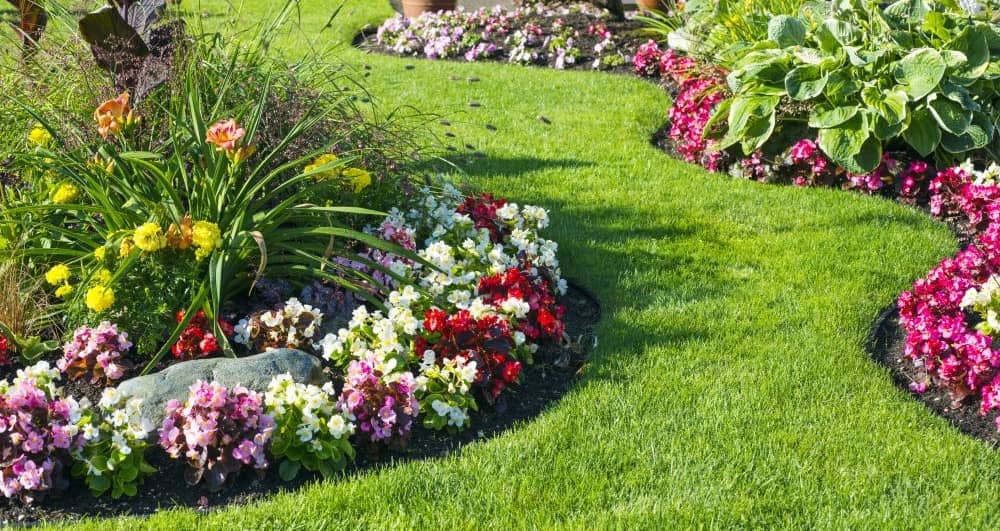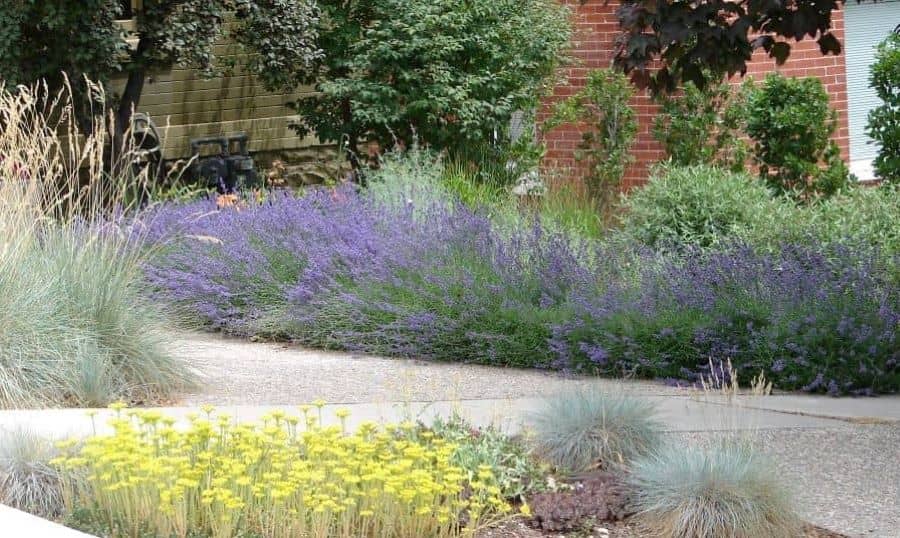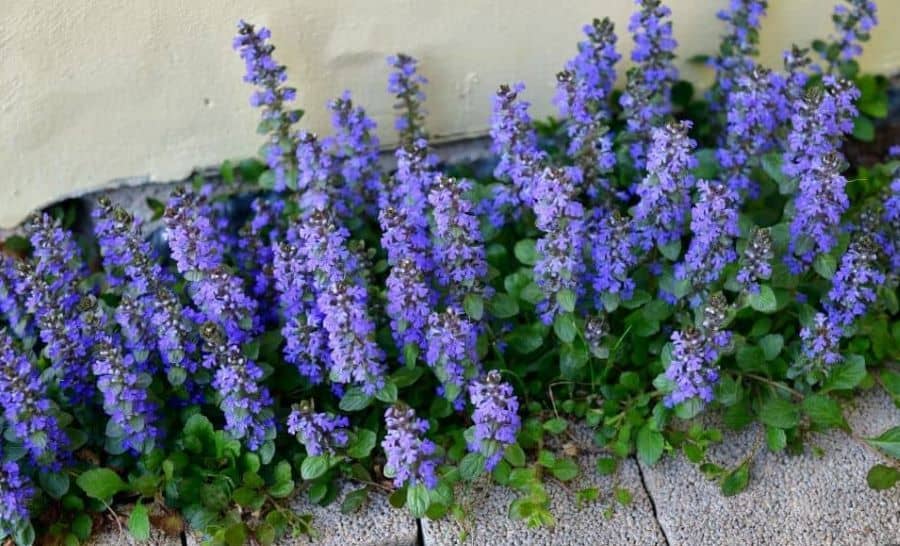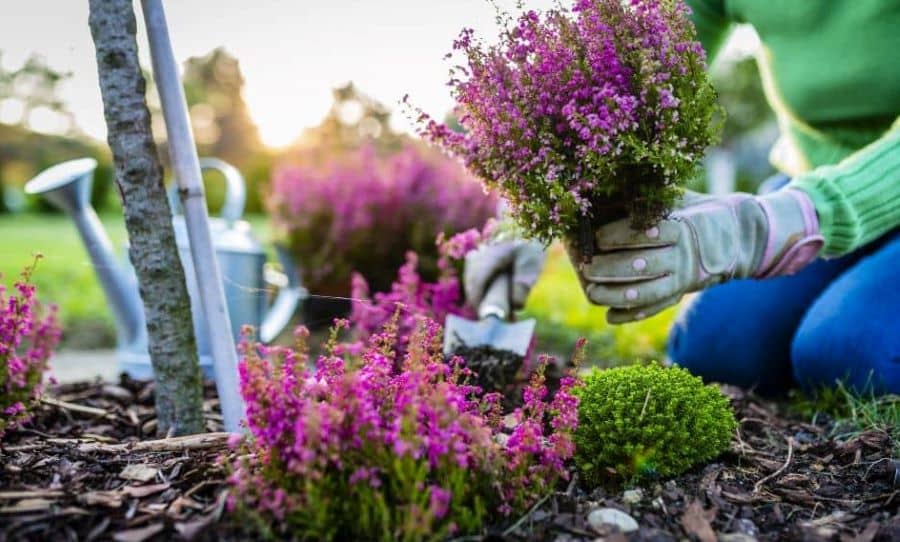Perennial Ground Covers for Beautiful Edges, Bright Borders, and Bald Spots

What if there was an alternative way to reduce the number of hours spent on mowing and edging, a way to conserve water usage, and a way to give you more time to relax and enjoy the beautiful vista of your property? Well, the answer to a water-saving, low maintenance, enhanced lawn appearance is to replace your lawn’s borders, edges, and bald spots with ground covers.
Why Ground Covers?
In addition to upgrading the eye appeal of your property, ground covers can help to eliminate some typical issues associated with traditional grass.
- Reduces mowing maintenance on flat and sloping areas
- Reduces chemical applications for pest control
- Reduces growth of weeds
- Reduces the use of fertilizers
- Reduces supplemental irrigation in dry and sandy areas
- Drought resistant
- Easy to plant and grow
- Excellent performers in hard to grow areas
- Attractive accents around landscaping projects, patios, and pools
- Bright foliage for bald spots
- Contributes to the ecosystem
- Adaptable to all terrains
- As perennials, they regenerate year after year

Which Ground Covers?
While the selection of Western Australian ground cover plants number in the dozens, you want to choose from those plants best suited for your property, for the different terrains where you will place them, and for your specific soil composition. Native Aussie ground covers are ideal plants for our local region because they come in a variety of shapes, textures, and colorful foliage, and they have already demonstrated their abilities to adapt to our climate and seasonal changes.
The greater Perth region is classified as being in the Mediterranean growing zone. This means that your ground cover will delight you with stunning, aromatic, year-round flowering. And, when you elect to plant a native garden, you are helping maintain a wildlife-friendly environment while still contributing to the area’s sustainable ecosystem.
Here are some useful tips when deciding on the best ground covers for your property.
- Invasive Plants: It is understandable that you may want to select a plant that will mature quickly and rapidly cover bald spots but take the time to ensure that your chosen plant is not an invasive species that will smother and kill surrounding trees, bushes, and other plants. Kudzu is a prime example of an invasive plant that is nearly impossible to remove once it is rooted. You can check your state’s agricultural listing for known invasive plants.
- Shade Loving Plants: The area around the base of trees is often bare because it does not get enough sunlight for grass to grow. The good news is that a lot of ground cover plants are shade-tolerant and will flourish in these darker areas. Check the light requirement needs on the plant label before putting it in the ground.
- Slope and Embankment Plants: Areas that are subject to erosion due to high winds, loose soil, or heavy rains require plants with deep roots that will hold tight where planted. There is no need to till the soil on slopes and embankments before placing the plants in the ground as this can loosen the ground and the plants may not be able to root well. Check the root strength on the labels of your plant selections.
- Traffic Friendly Plants: Some ground covers are too delicate for high traffic areas and can easily be damaged when stepped on. Those ground covers are best planted around the base of trees, under bushes, along fence lines, and against the front of home structures. More resilient, traffic-friendly ground covers work well when lining walkways, at lawn edges, between pavers and flagstones, and as a border outlining pools, ponds, and patios. You can avoid plants that pose tripping obstacles if you only use very low-growing ground covers in high-traffic areas. Read the traffic friendliness of your chosen ground cover on the plant’s label.

How to Plant Ground Covers
Preparing the soil for ground cover plants depends on where the cover will be used.
- Weed Removal: In all cases, you want to eliminate the weeds in the projected plant areas by either the labor-intensive method of hand pulling them out or sprinkling the space with Bibra Lake Soils Feed and Weed.
- Flat Ground Preparation: Clear the area of grass and then till and turn the loosened soil down to a depth of 15.24 cms. Water the area and then apply our time-released Bibra Lake Soils Feed and Weed as described on the product label. Cover the ground with clear plastic for two weeks to allow the sun to heat and boost the soil’s support potential for newly placed plants. Remove the plastic cover and recover the area using a water-permeable landscaping cloth to minimize weed regrowth. Cut holes in the cloth spaced at the distances that the expanding ground cover will reach maturity, fold the cloth flaps back and place the plants in the ground. Pack loosened soil around the root bulbs.
- Protective Barrier: If your ground cover will spread via an underground root expansion system, you need to keep the roots in the desired ground cover area and prevent the roots from over-spreading into the grassy areas of your lawn. Dig a narrow trench around the desired ground cover area and insert landscape edging material down to a depth of 25.4 cms to establish a protective barrier to prevent the roots from growing into adjoining lawn areas.
- Slopes and Embankments Preparation: These areas cannot be tilled before planting as the loosened soil encourages erosion. Once you have removed the weeds using Bibra Lake Soils Feed and Weed, dig spaced holes in the ground at the distances that the mature plants will spread out to reach each other and dig down to a depth twice as deep as the root balls of each plant. Place each plant in the center of the hole and pack the area with our high-quality potting soil.

Now that your ground cover is in place, you can enjoy the upgraded appearance of your renovated, low-maintenance lawn and other outdoor areas.
If you have any questions or need ground preparation assistance, you can chat with our friendly, knowledgeable Bibra Lake Soils staff by calling us at (08) 9434 2290, by sending us an email at info@bibralakesoils.com.au, or by visiting us at 222 Barrington St, Bibra Lake WA 6163. We are open 7 days a week for your landscaping supplies.


